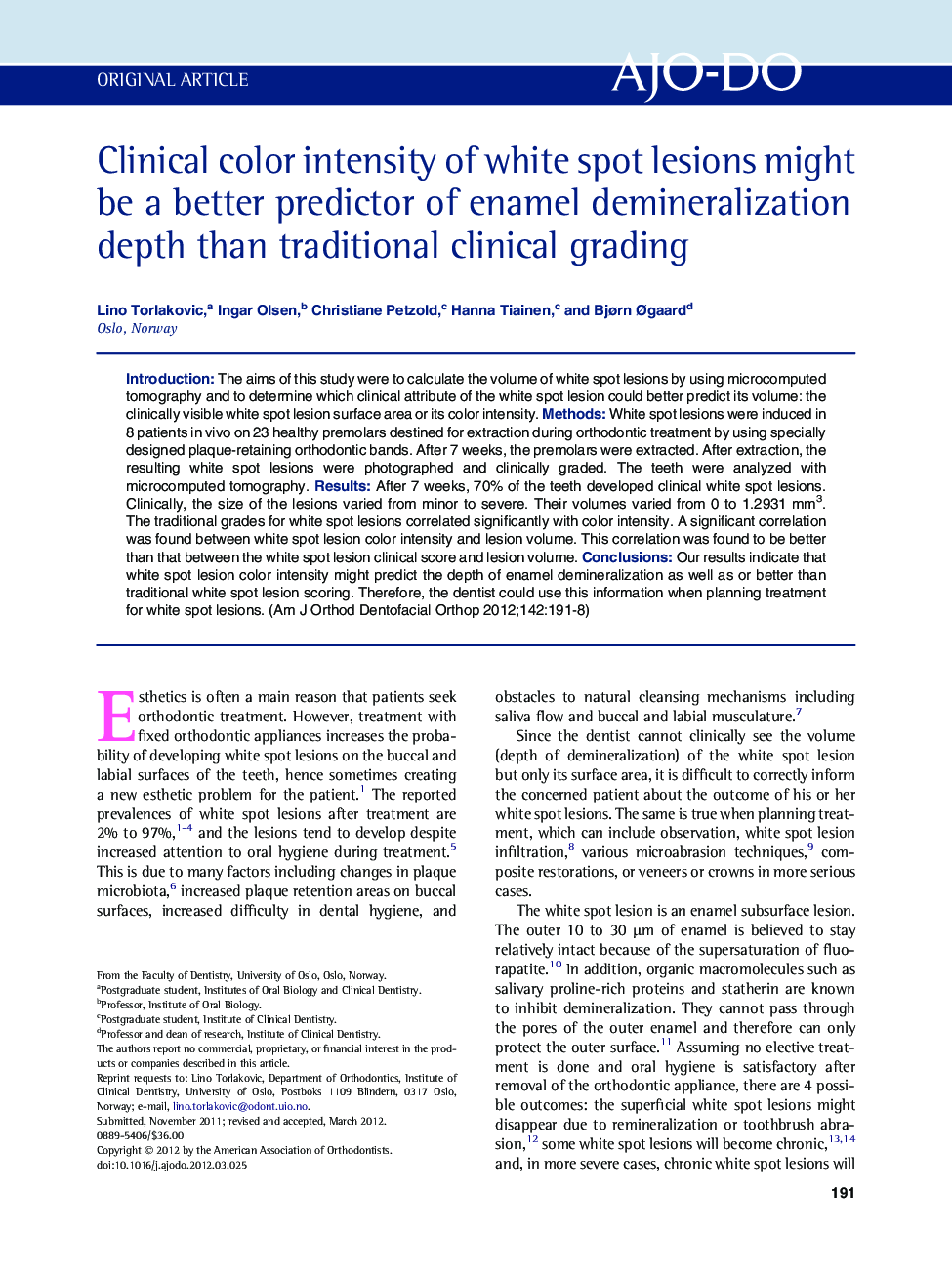| Article ID | Journal | Published Year | Pages | File Type |
|---|---|---|---|---|
| 3116501 | American Journal of Orthodontics and Dentofacial Orthopedics | 2012 | 8 Pages |
IntroductionThe aims of this study were to calculate the volume of white spot lesions by using microcomputed tomography and to determine which clinical attribute of the white spot lesion could better predict its volume: the clinically visible white spot lesion surface area or its color intensity.MethodsWhite spot lesions were induced in 8 patients in vivo on 23 healthy premolars destined for extraction during orthodontic treatment by using specially designed plaque-retaining orthodontic bands. After 7 weeks, the premolars were extracted. After extraction, the resulting white spot lesions were photographed and clinically graded. The teeth were analyzed with microcomputed tomography.ResultsAfter 7 weeks, 70% of the teeth developed clinical white spot lesions. Clinically, the size of the lesions varied from minor to severe. Their volumes varied from 0 to 1.2931 mm3. The traditional grades for white spot lesions correlated significantly with color intensity. A significant correlation was found between white spot lesion color intensity and lesion volume. This correlation was found to be better than that between the white spot lesion clinical score and lesion volume.ConclusionsOur results indicate that white spot lesion color intensity might predict the depth of enamel demineralization as well as or better than traditional white spot lesion scoring. Therefore, the dentist could use this information when planning treatment for white spot lesions.
